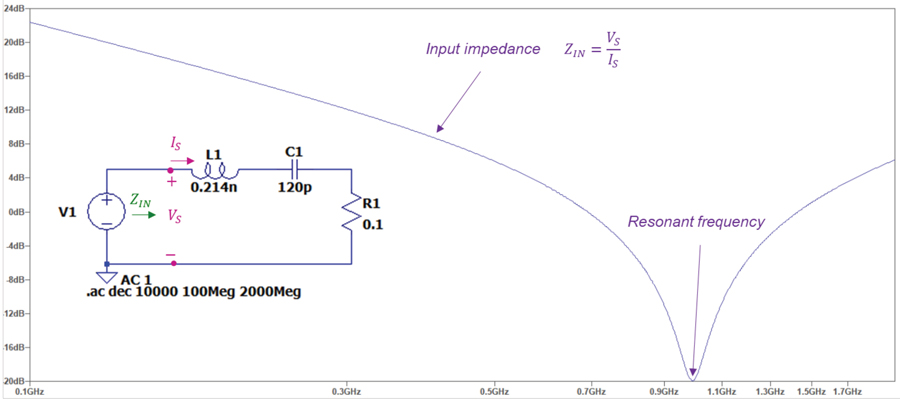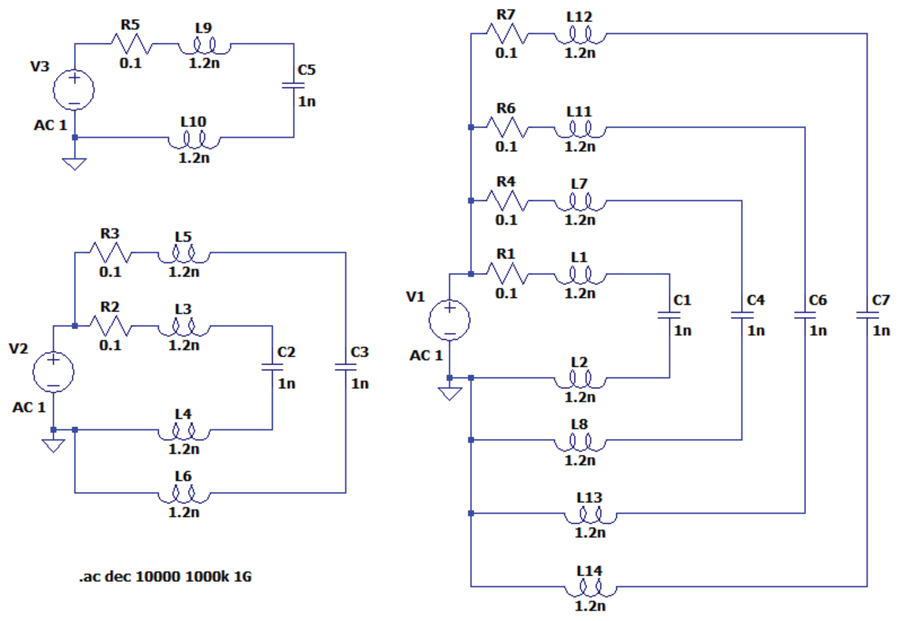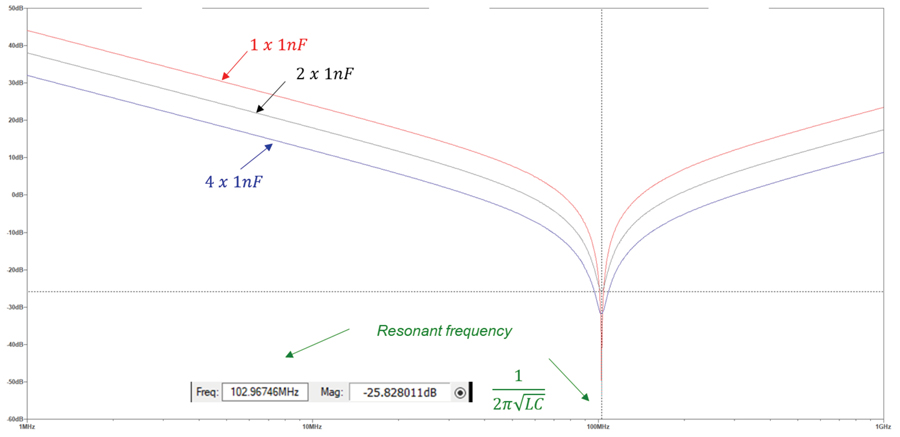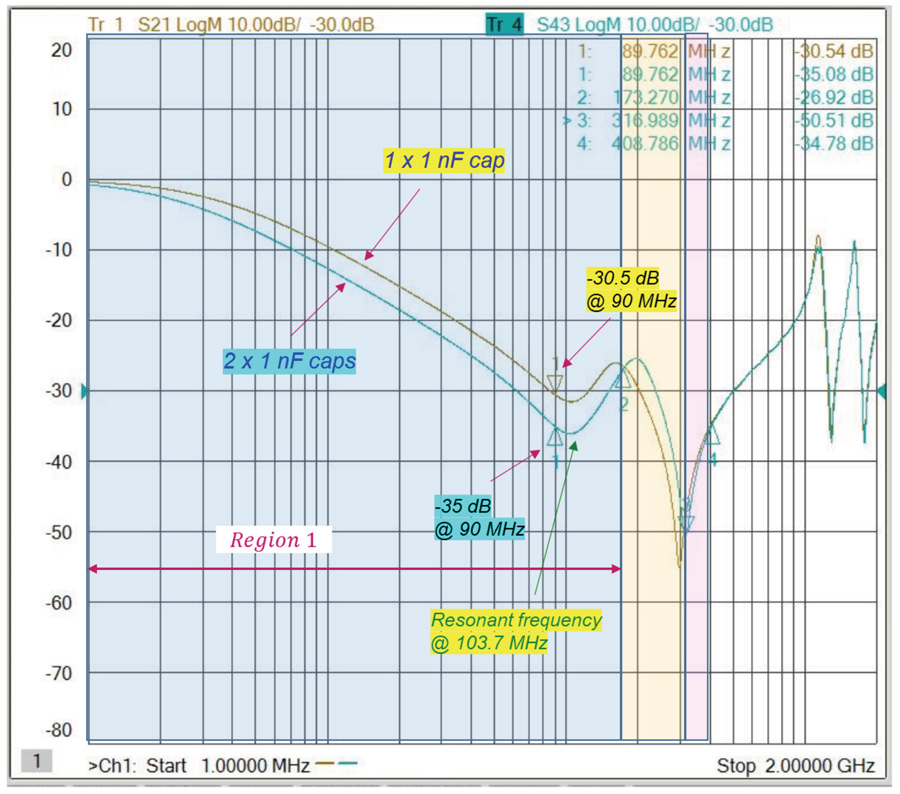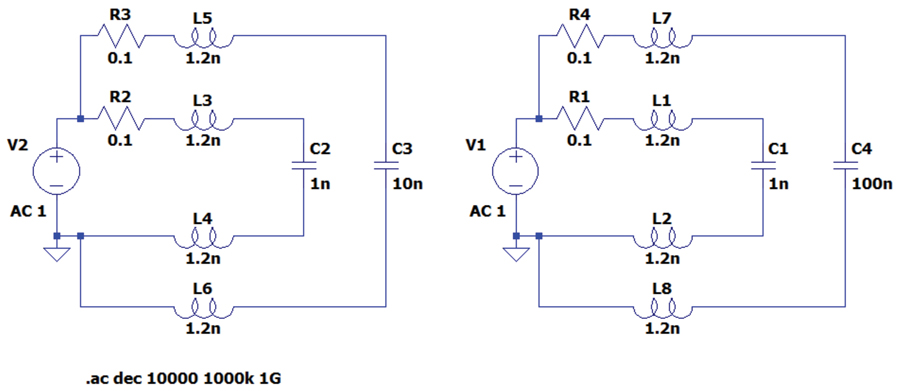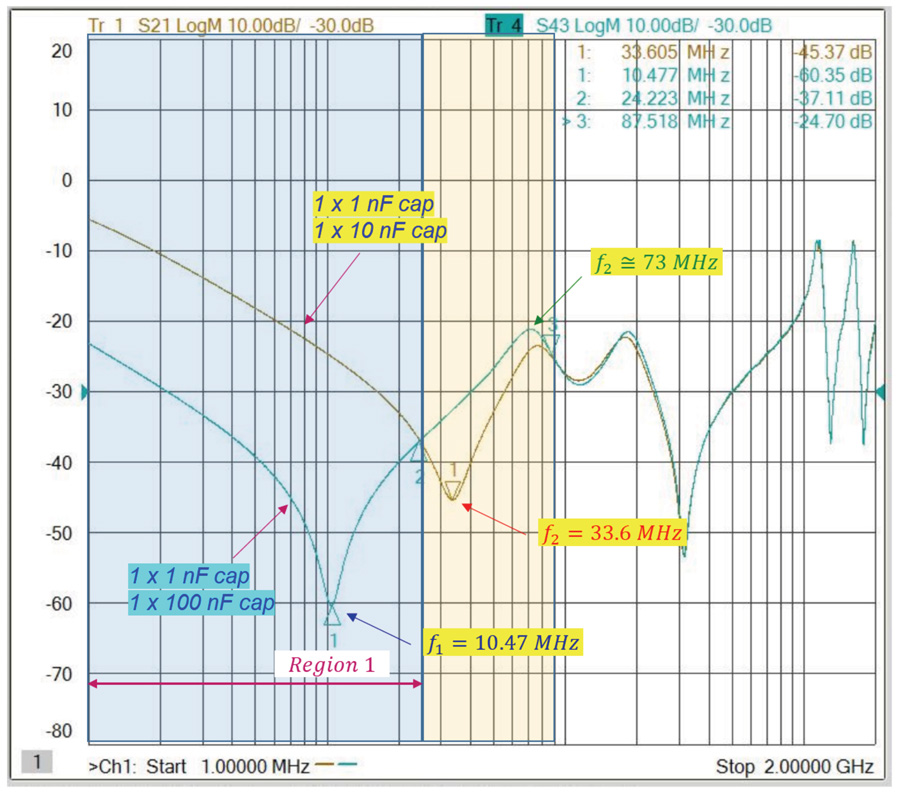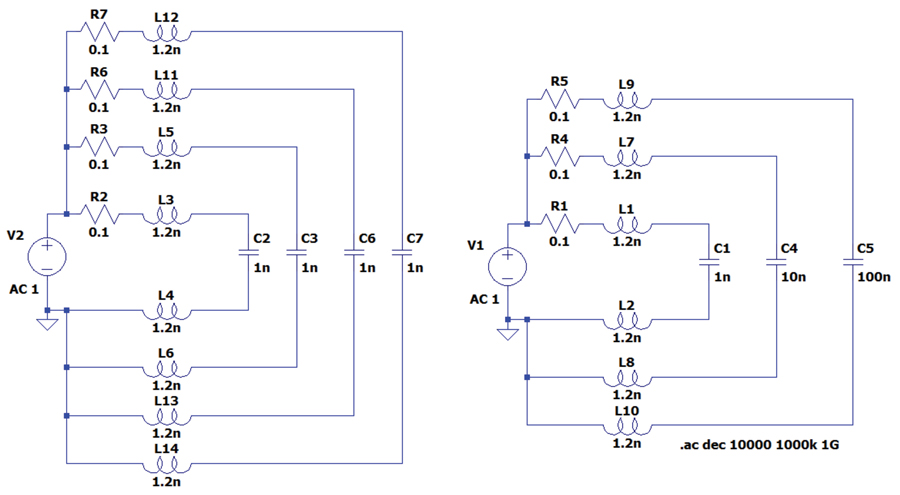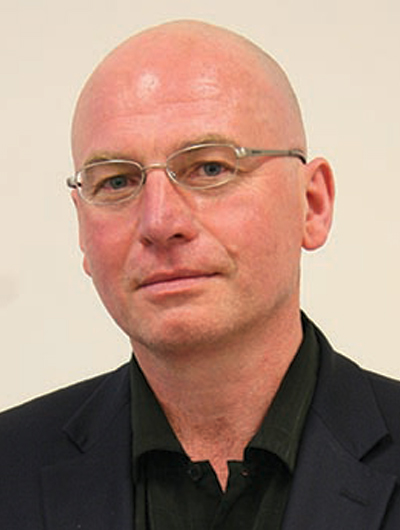Part II: Decoupling Capacitors
n Part I [1] the concept of resonance was introduced and applied to the circuit models of the non-ideal passive components. In Part II the resonance phenomenon is explained using several common decoupling capacitor configurations. Simulation results are compared to the measurement results for different decoupling approaches.
The plot shown in Figure 1 corresponds to a 120 pF capacitor with an internal parasitic capacitance of 0.214 nH. When a decoupling capacitor is placed on a PCB, an additional parasitic inductance coming from the PCB trace itself needs to be added to the circuit model.
We begin by comparing the input impedance of a single 1 nF capacitor vs. the impedance of multiple capacitors of the same value.
The impedance curves for these networks are shown in Figure 3.




Figure 4 shows the impedance curves for the case of a single 1 nF capacitor vs. two 1 nF capacitors, while Figure 5. Compares two 1 nF capacitors vs. four 1 nF capacitors.
The impedance curves for these networks are shown in Figure 7.
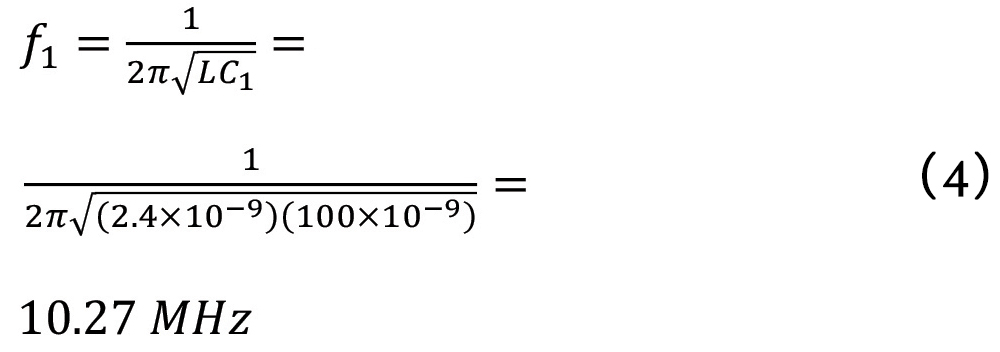


The impedance curves for these networks are shown in Figure 10.
Note that now we have three resonant frequencies and two anti-resonant frequencies. Next, let’s compare these results with the measured values, shown in Figure 11.
Note that the measured resonant frequencies are consistent with the calculated and simulated values. Also, the measured anti-resonant frequencies agree with the predicted simulated values.
- Bogdan Adamczyk, “EMC Resonance – Part I: Non-Ideal Passive Components,” In Compliance Magazine, February 2021.
- Henry W. Ott, Electromagnetic Compatibility Engineering, Wiley, 2009.
- Bogdan Adamczyk and Jim Teune, “Impact of Decoupling Capacitors and Embedded Capacitance on Impedance of Power and Ground Planes – Part II,” In Compliance Magazine, April 2020.
- Clayton R. Paul, Introduction to Electromagnetic Compatibility, Wiley, 2006.
